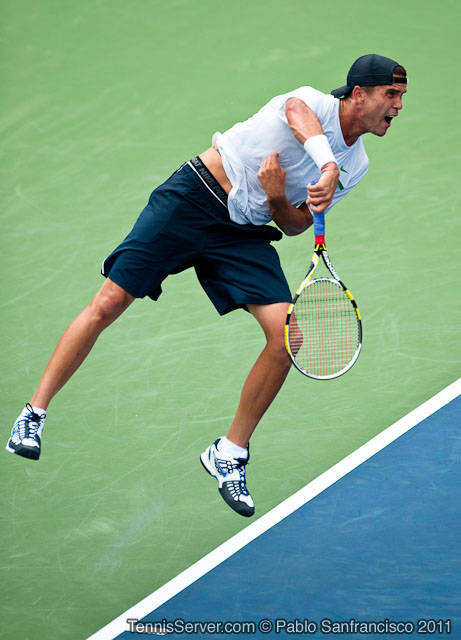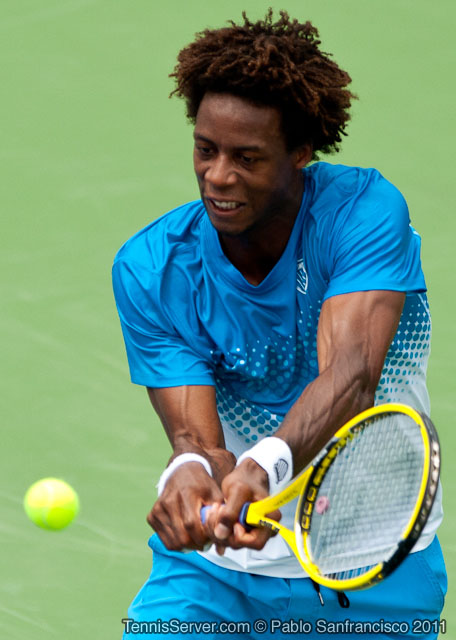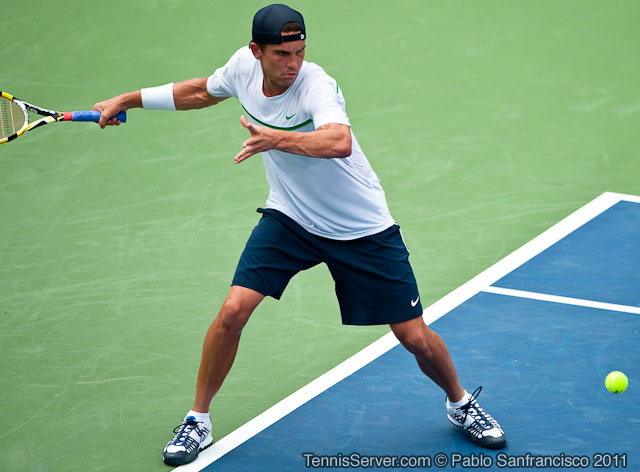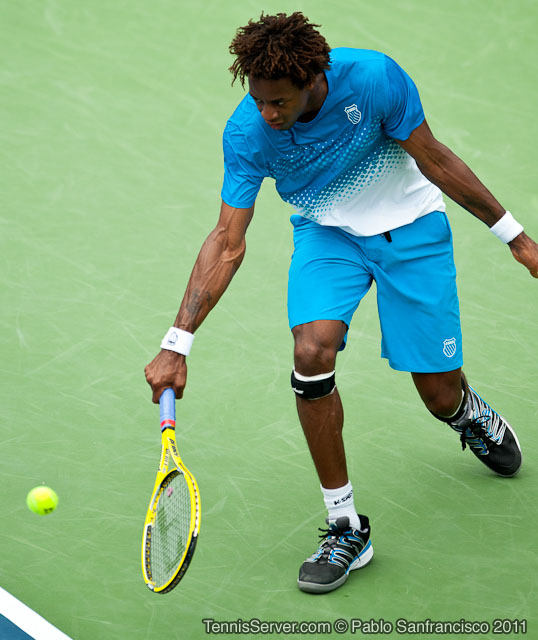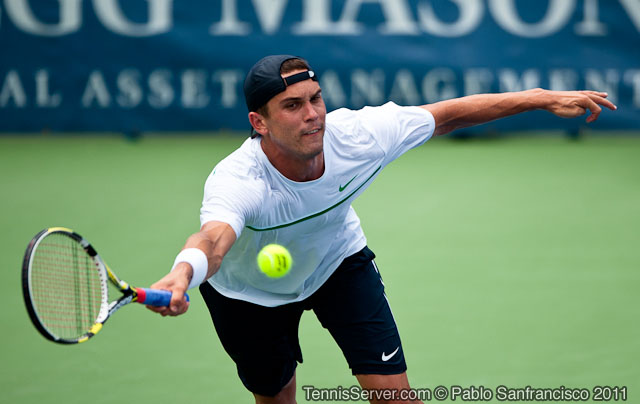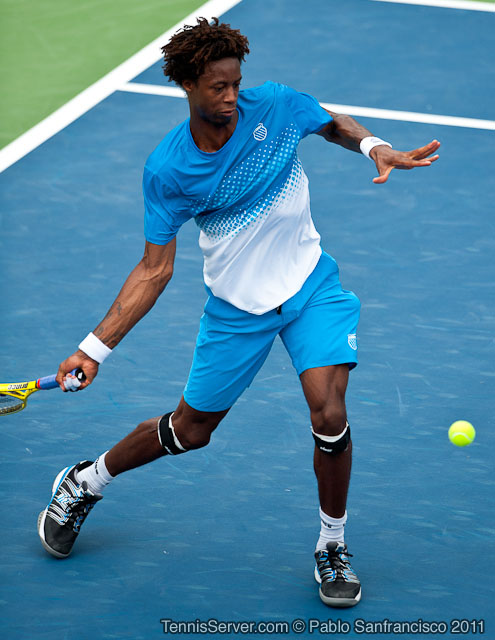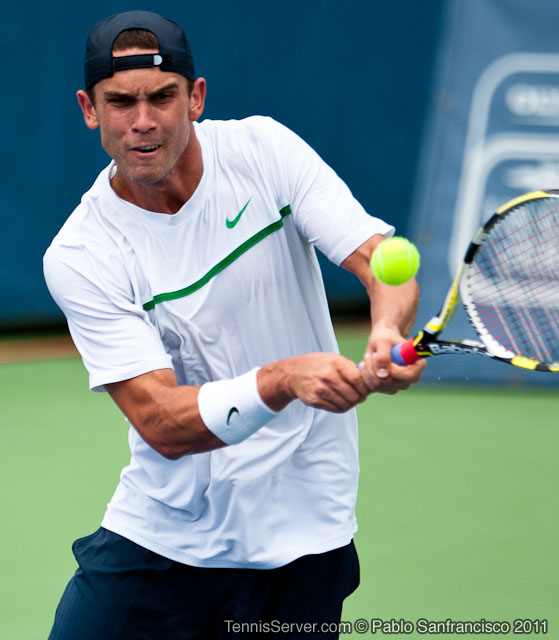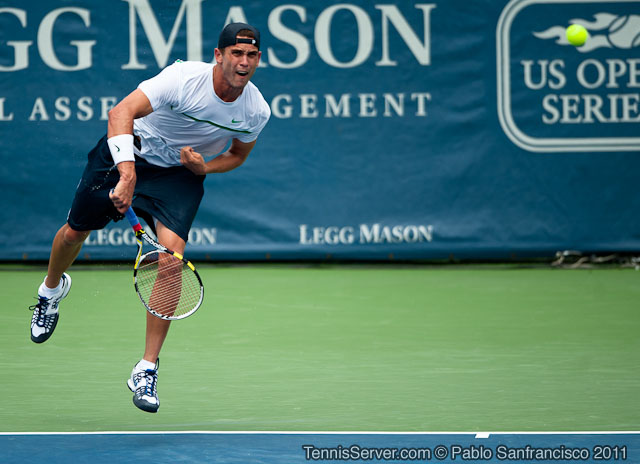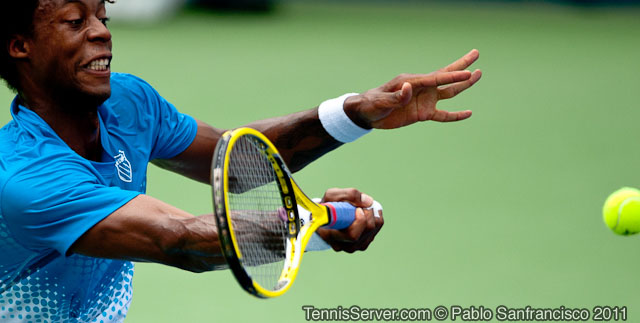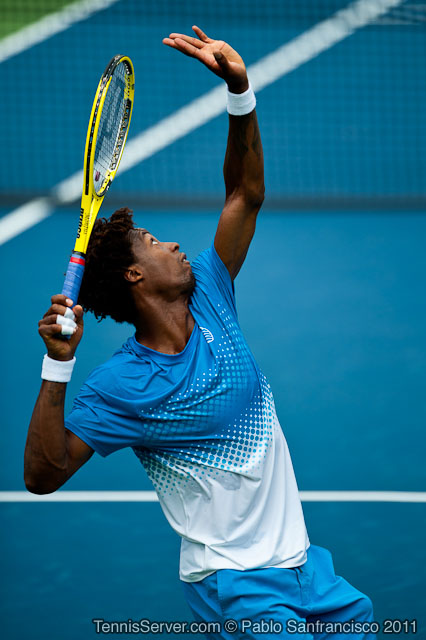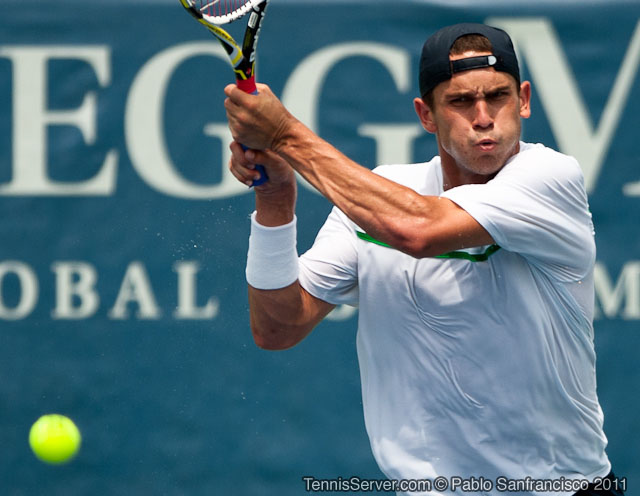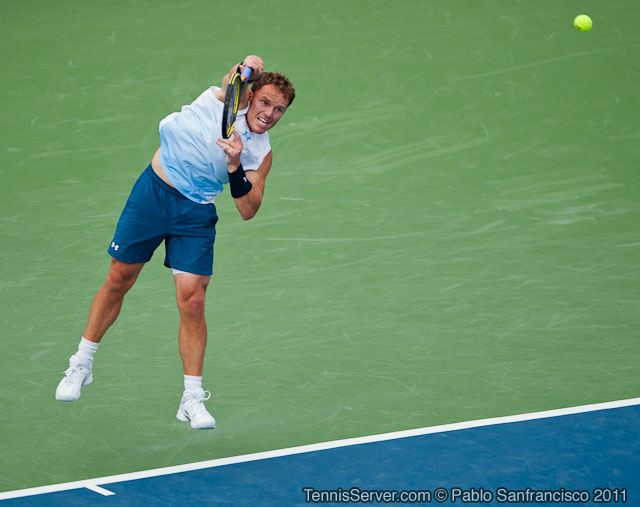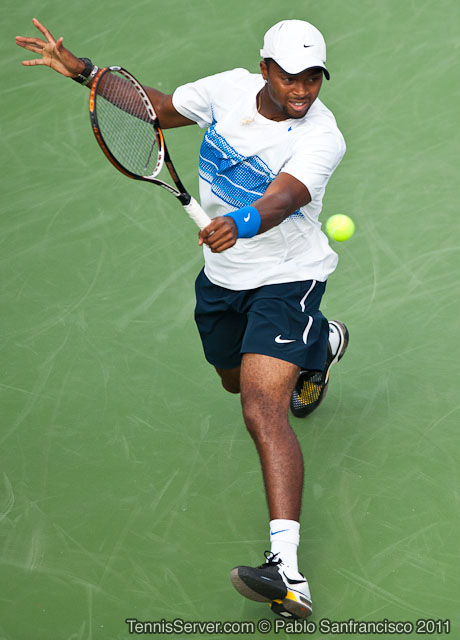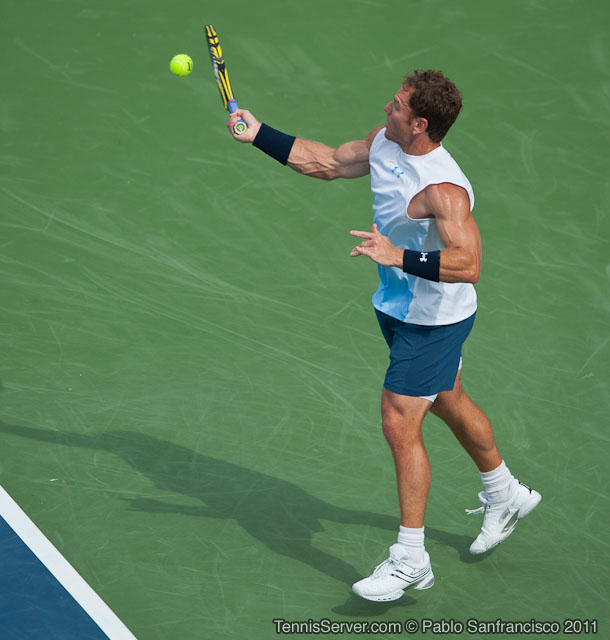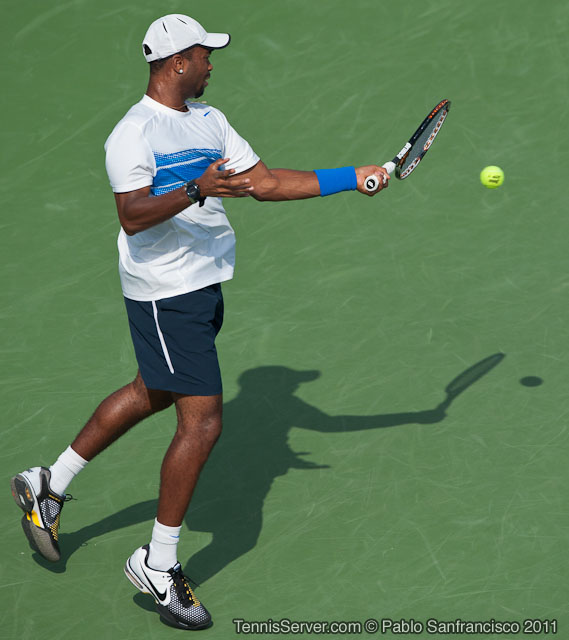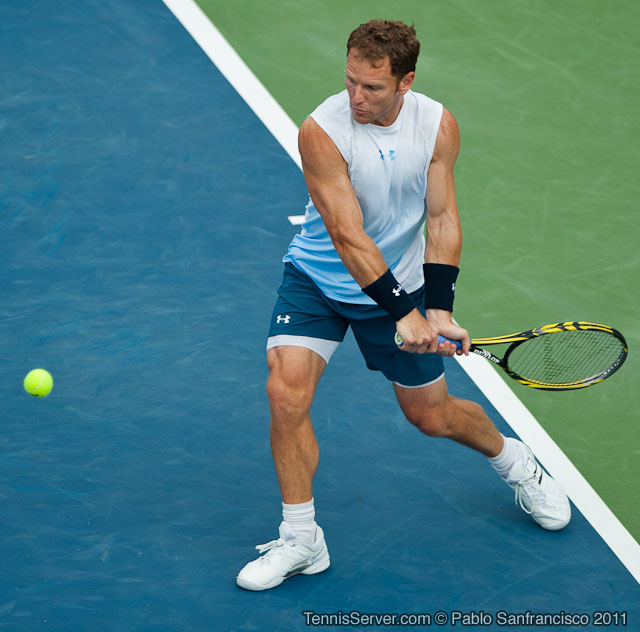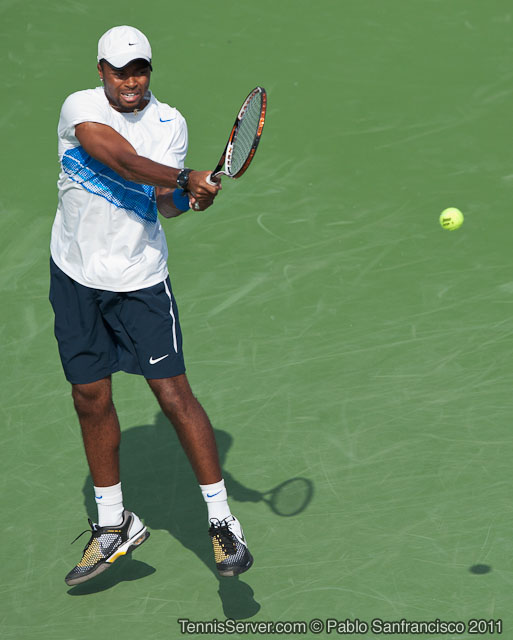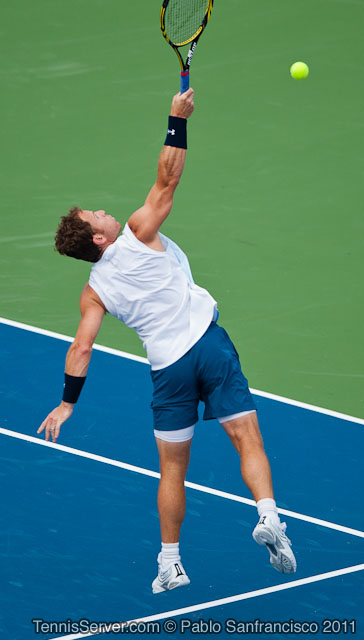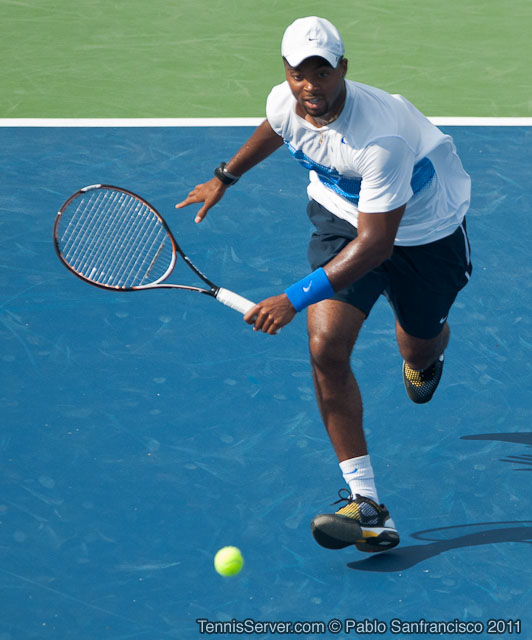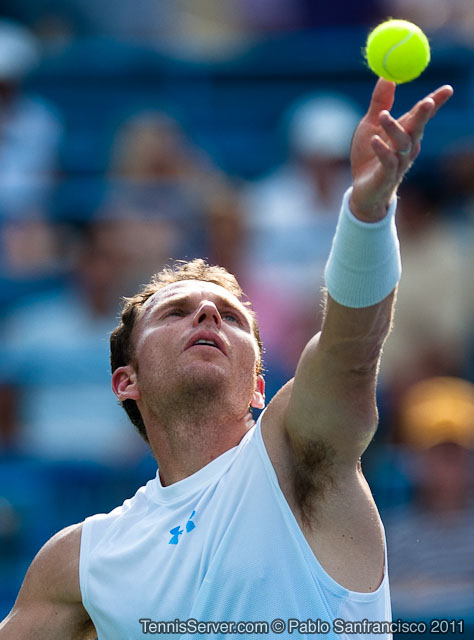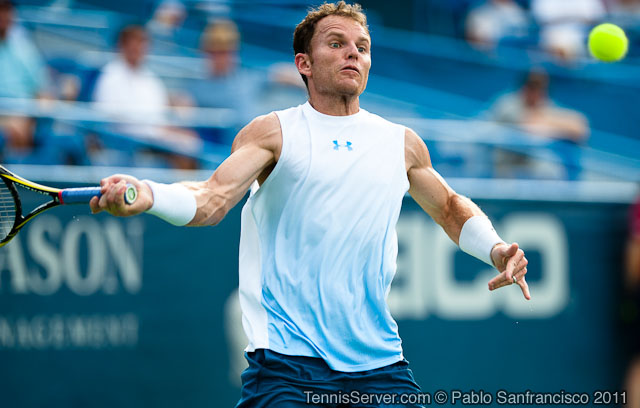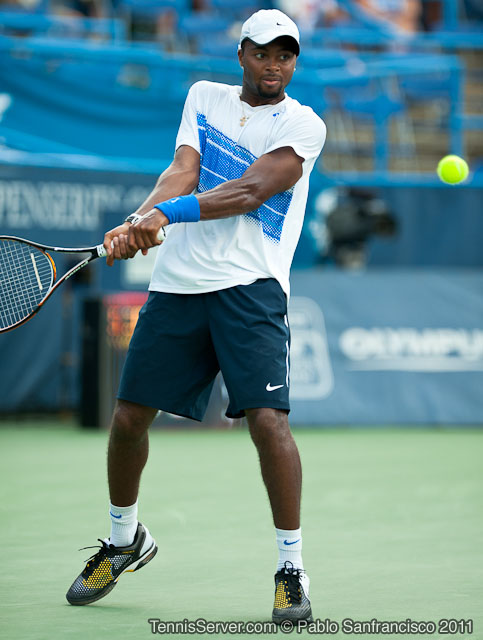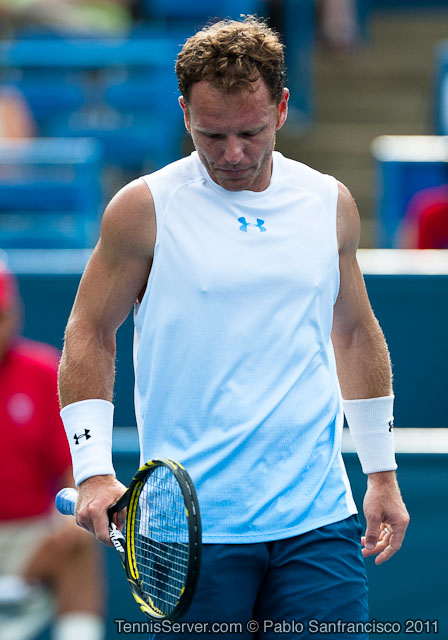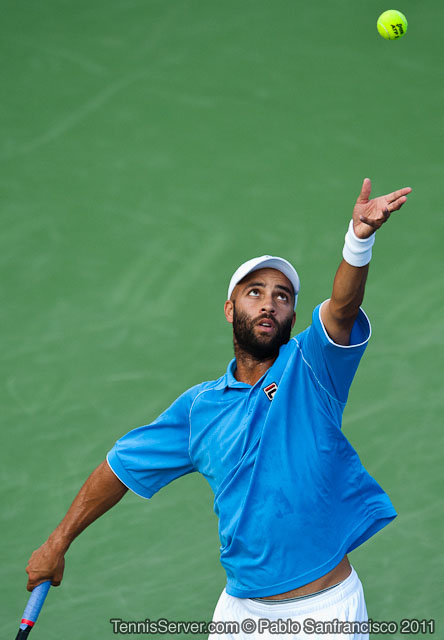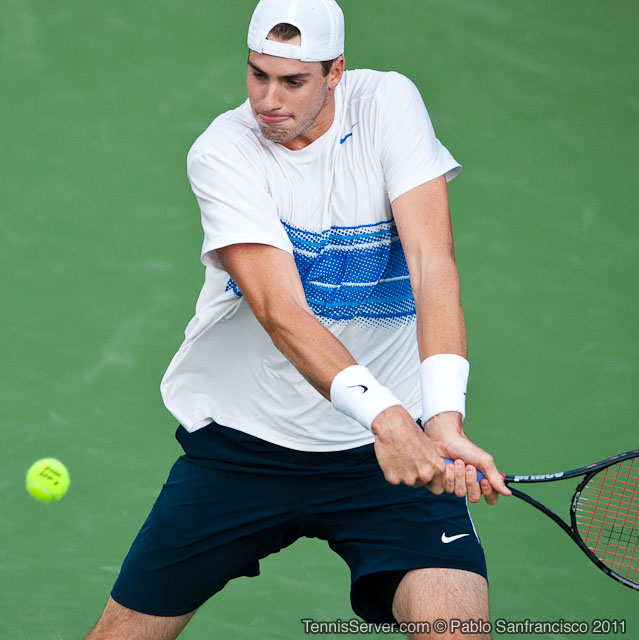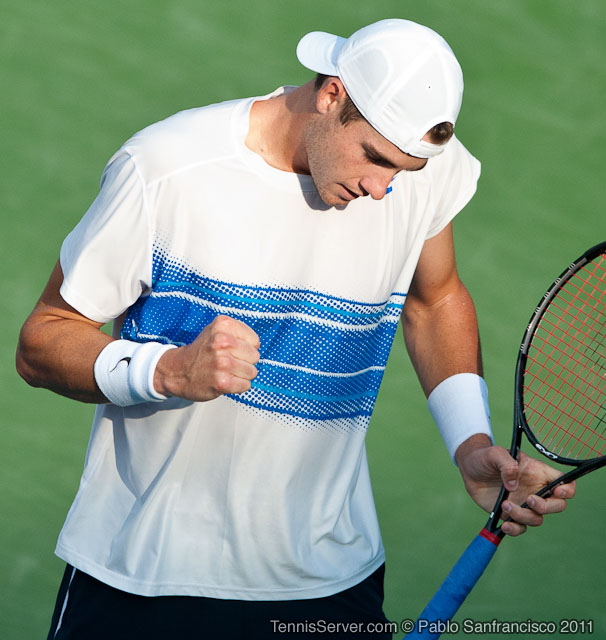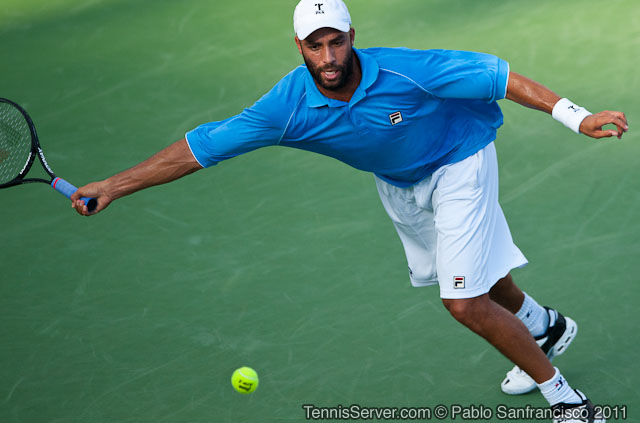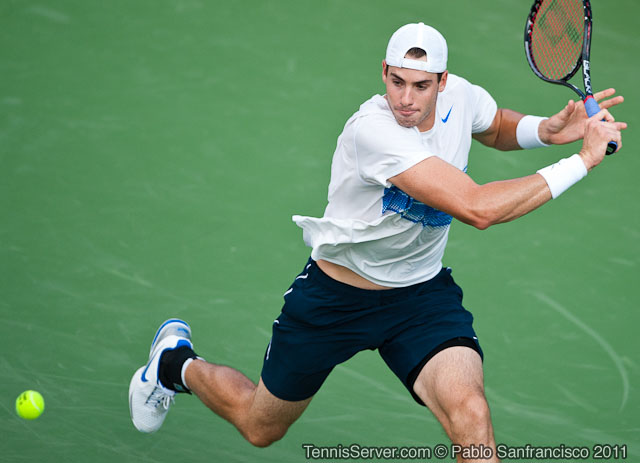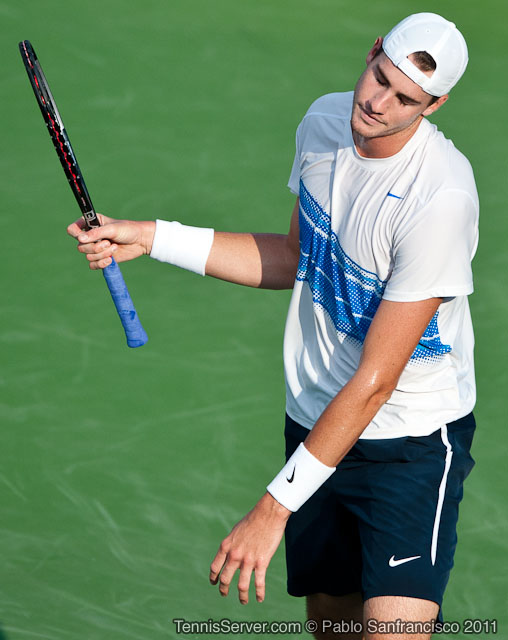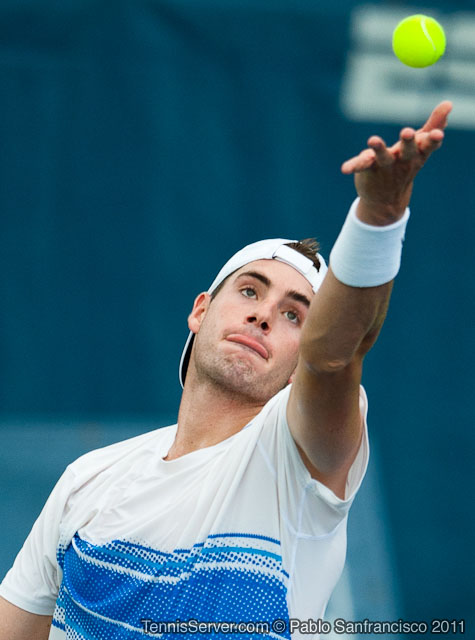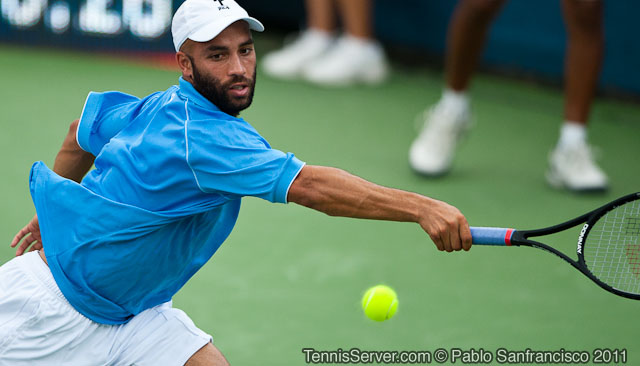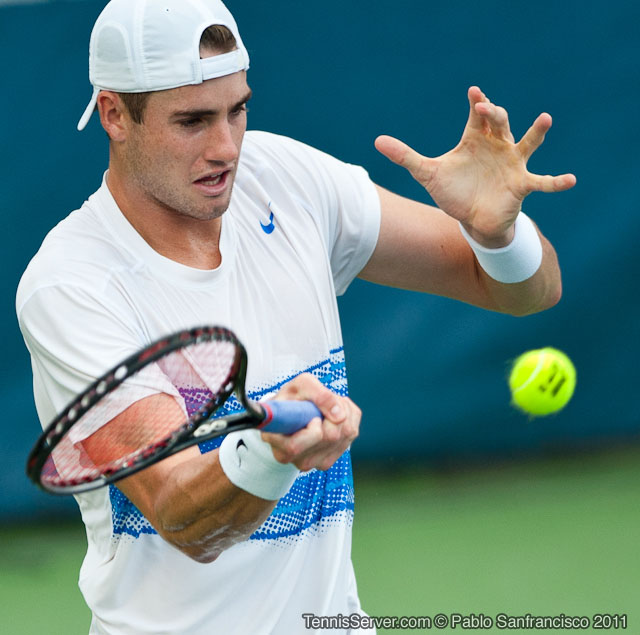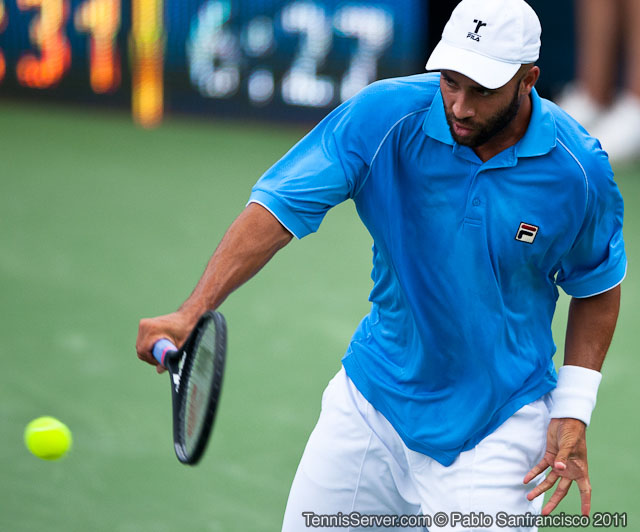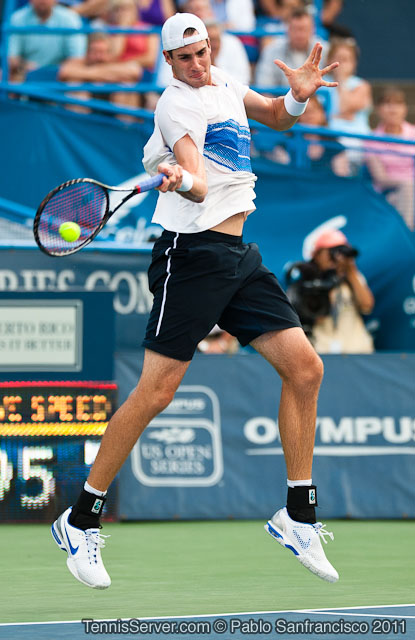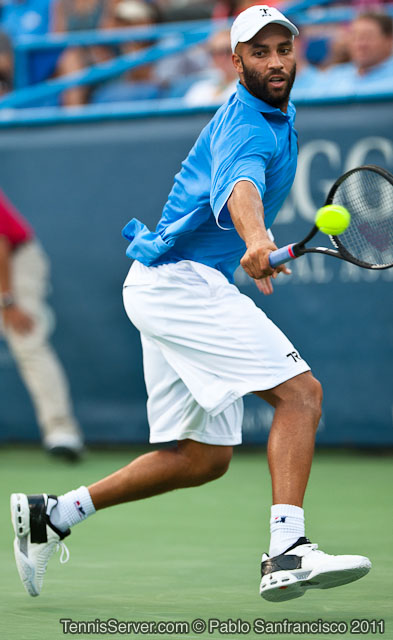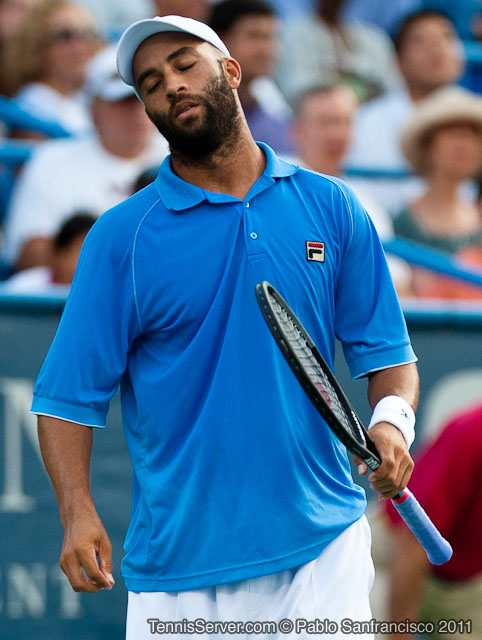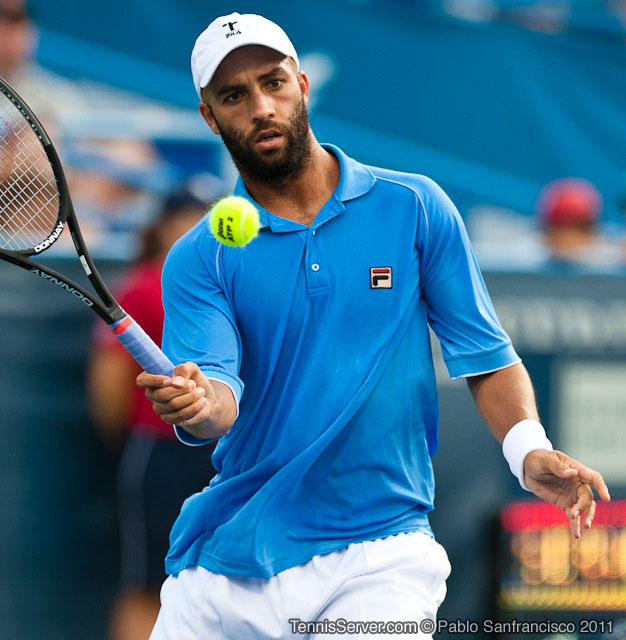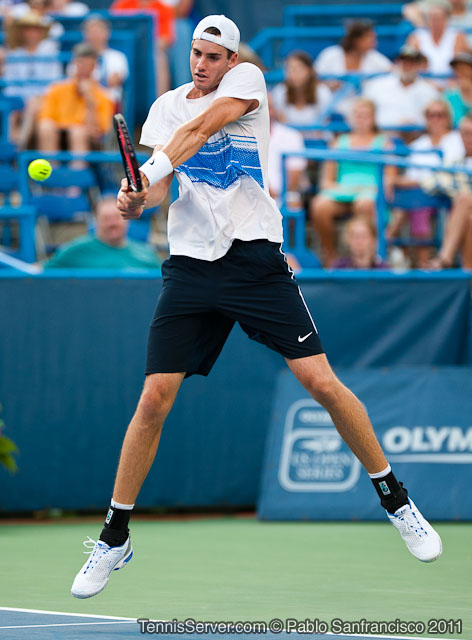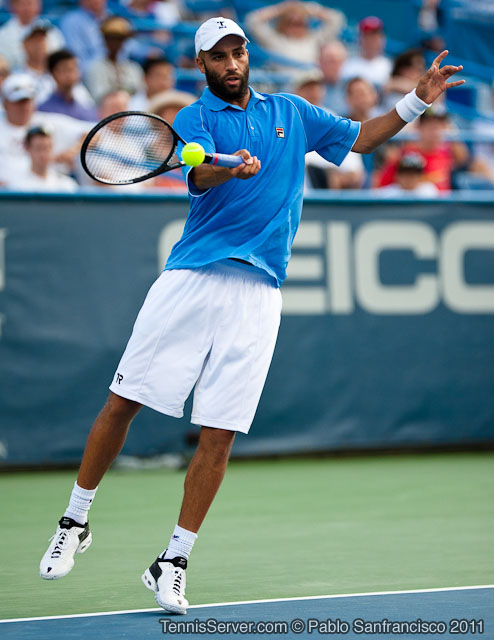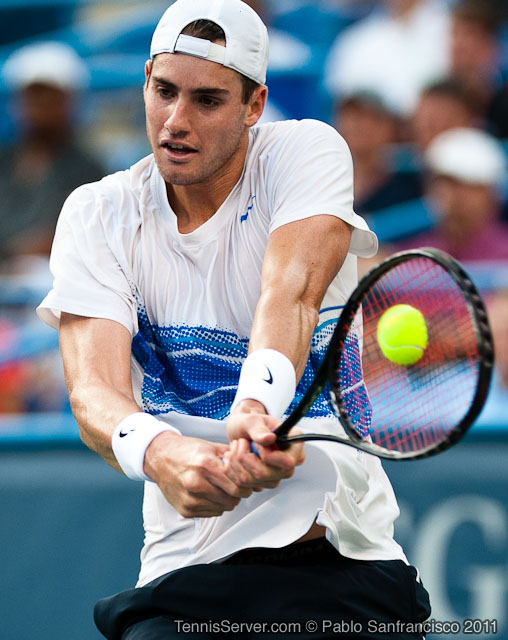|

 |
2011 Legg Mason Tennis Classic - Washington, DC, USA
August 4, 2011
Editorial By Ray Bowers. Photography by Pablo Sanfrancisco.

Ray Bowers |
Legg Mason Thursday
In the life of a tennis player, there are perhaps a handful of matches that stand out as pivotal, where the outcome changed or might have changed the trajectory of a whole career. Three of the matches on Stadium Court today, it seemed, had the potential for such majesty.
SWEETING vs. MONFILS
At age 24 and height 6-5, Ryan Sweeting has risen nicely in the rankings of late, winning the U.S. Clays in Houston this spring and scoring well enough overall in the year's first trimester to command inclusion in our spring watch list. Since then his career has leveled off, but he won his first-round match here earlier this week, defeating Alex Bogomolov, who had reached the semis at Los Angeles a few days before. Sweeting began the week with ATP ranking of #66.
Ryan's game is built around a forcing serve and heavy ground strokes, especially what was today a very solid backhand two-hander. His opponent was Gael Monfils, also 24, with ATP rank of #7, in Gael's first North American appearance of the summer. What seemed clear was that to defeat Gael's magnificent speed and power, Ryan would have to play at his highest level, holding down unnecessary errors, attacking but minimizing mistakes in doing so.
Slender and flexible, Gael seemed relaxed -- restrained in employing his own more severe weaponry, willing to allow Ryan attacking opportunities, seemingly confident in his own ability to be wherever the American drove his forcing shots. Playing well, and especially serving well, Ryan held serve through most of the first set, often hammering away in first-strike tennis following limp service returns by Gael. When Monfils allowed himself to be pushed deep, Ryan showed a nice knack for short angles, especially to Gael's backhand. But Ryan finally surrendered serve in a long eighth game, erring in several highly forcing strikes.
Both men improved in the second set, both less generous in error-making. Gael broke serve early, Ryan answered with some splendid backhand serve-returns to square things at three-games-all. But upon reaching a second-set tiebreaker, Ryan folded early amid his own error-making. Throughout the match, a decisive weapon had been Gael's ace-striking ability. (The French star outscored Ryan in this department, 17-2.)
Disappointed, Sweeting should instead be encouraged at the likelihood of strong results in the rest of the summer. Not many players are better than Gael in withstanding play as forceful as Ryan's. Meanwhile for Gael, a higher level of greatness this summer remains tantalizing but unproven.
RUSSELL vs. YOUNG
These two Americans -- Mike Russell, 33, and Donald Young, 22, seem at the opposite poles of their pro careers. But on this day they provided a fascinating match-up of differing styles and strengths.
Yesterday Donald Young replied to reporters that he believed his playing pattern was primarily neither offensive nor defensive. But in today defeating Mike Russell, who was slightly higher ranked, Donald provided a textbook example of air-tight, largely defensive tennis. In seizing the initiative only occasionally, he did so just enough to claim his opponent's notice. Most of the time his purpose was to move the ball about Michael's court, give him no clear openings, counterpunch when needed, and, above all, to hold down his own errors.
It was assuredly a formula for defeating Russell, who cooperated by sailing out of court many returnable offerings. While Michael's forehand has fair pace and control, it caries relatively little overspin along with an excess of sidespin, which produces a heavier weight of shot but detracts from control, both side-to-side and fore-and-aft.
It will take an opponent more powerful than Michael to bring down Donald's air-tight tennis this week.
BLAKE vs. ISNER
James Blake is working hard to regain his past glory. On this day he outplayed John Isner in almost every respect, including in total points won (112 points vs. 103). But not on the final scoreboard.
There were no breaks of serve in the first set. Isner one-sidedly won the tiebreak game, stepping up his serving velocities to the mid-130's to good effect. James seemed unprepared for the heavier bombardment. The second set went quickly to Blake, who broke serve early and moved quickly to conclusion with little objection from his opponent.
Matters heated up nicely in set three. James improved in his general court play, again and again showing court movement and placement that dazzled the gallery. James broke serve in the fourth game, but John returned the insult in the very next game, his serve-returning and all-court play probably at its peak of the evening. But the spell soon passed, and as the predestined tiebreak game neared, it seemed that John could scarcely win a point if James somehow managed to get John's serve back.
I wondered whether Blake was being too bold in standing very close to the baseline in returning John's first serve, indeed inside the baseline in returning the second. Despite his quickness and strength, too often James's serve-returns failed to find John's side of the court. Meanwhile the earlier crispness in John's ground strokes had passed.
But if John seemed to be fading, the third-set tiebreak brought fresh opportunity. Once again John raised his serving velocities, and the first nine points all went to whichever man was serving. The pattern ended on the very next point when John attacked James's second serve and followed with a winning volley at net. After one more point it was over.
Blake lost the match. But he showed a level of determination and skill that assuredly promises better things just ahead. My wish for both Blake and Monfils is that both could find a middle ground between each other -- half-way between Blake's all-out aggressiveness and Monfils's too-frequent passivity.
[1/WC] Gael Monfils (FRA) {blue shirt} d Ryan Sweeting (USA) 63 76(3)
Donald Young (USA) {white hat} d Michael Russell (USA) 63 63
[11] John Isner (USA) {black shorts} d James Blake (USA) 76(0) 16 76(4)
Earlier Columns from this Event:
August 3, 2011 Legg Mason Classic: Donald Young, Jurgen Melzer & Lots Of Rain
August 2, 2011 Legg Mason Classic: Harrison, Haas, Blake, Nalbandian, Zverev, Delic
August 1, 2011 Legg Mason Classic: Blake, Young, Stepanek, Petzschner, Sitak, Ito
  
Player Profile Index (Men) | Pro Tennis Showcase Archive | Player Profile Index (Women)
|
SUBSCRIBE TO THE TENNIS SERVER PHOTO FEED
|
All Tennis Server photography is copyrighted by the photographer and/or the Tennis Server, and all rights are reserved. You may not copy these images without permission. While you are welcome to create hyperlinks to Tennis Server web pages, you may not embed these images into other web pages or blogs without permission. To request permission, please use this contact form. Please be sure to clearly indicate exactly which photograph(s) you are requesting permission to use, as terms and conditions will vary depending on the photographer and the photograph.
|
 |
|

|





 You will join 13,000 other subscribers in receiving news of updates to the Tennis Server along with monthly tennis tips from tennis pro Tom Veneziano.
You will join 13,000 other subscribers in receiving news of updates to the Tennis Server along with monthly tennis tips from tennis pro Tom Veneziano. 
